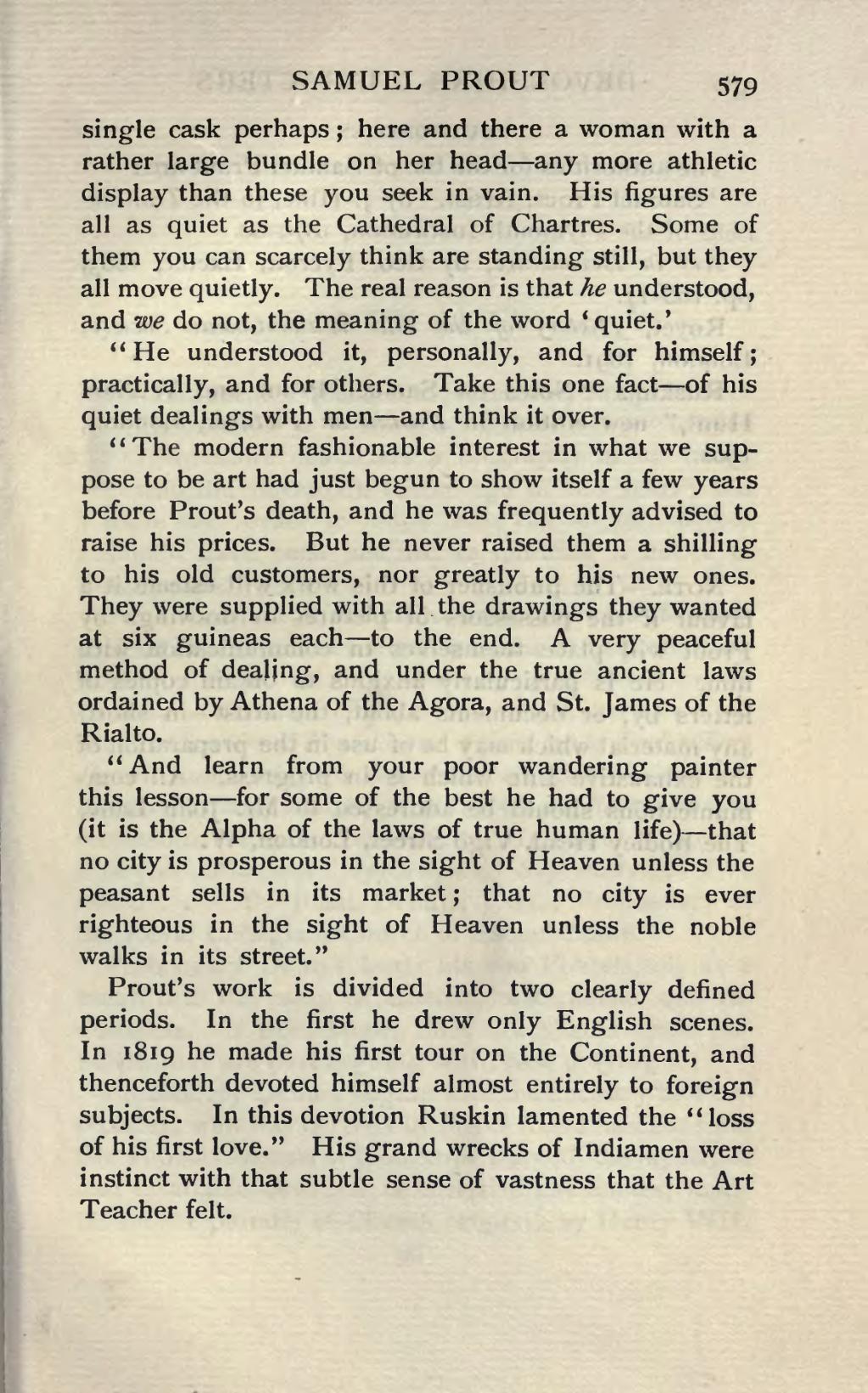single cask perhaps; here and there a woman with a rather large bundle on her head—any more athletic display than these you seek in vain. His figures are all as quiet as the Cathedral of Chartres. Some of them you can scarcely think are standing still, but they all move quietly. The real reason is that he understood, and we do not, the meaning of the word ’quiet.'
"He understood it, personally, and for himself; practically, and for others. Take this one fact—of his quiet dealings with men—and think it over.
"The modern fashionable interest in what we suppose to be art had just begun to show itself a few years before Prout's death, and he was frequently advised to raise his prices. But he never raised them a shilling to his old customers, nor greatly to his new ones. They were supplied with all the drawings they wanted at six guineas each—to the end. A very peaceful method of dealing, and under the true ancient laws ordained by Athena of the Agora, and St. James of the Rialto.
"And learn from your poor wandering painter this lesson—for some of the best he had to give you (it is the Alpha of the laws of true human life)—that no city is prosperous in the sight of Heaven unless the peasant sells in its market; that no city is ever righteous in the sight of Heaven unless the noble walks in its street."
Prout's work is divided into two clearly defined periods. In the first he drew only English scenes. In 1819 he made his first tour on the Continent, and thenceforth devoted himself almost entirely to foreign subjects. In this devotion Ruskin lamented the "loss of his first love." His grand wrecks of Indiamen were instinct with that subtle sense of vastness that the Art Teacher felt.
